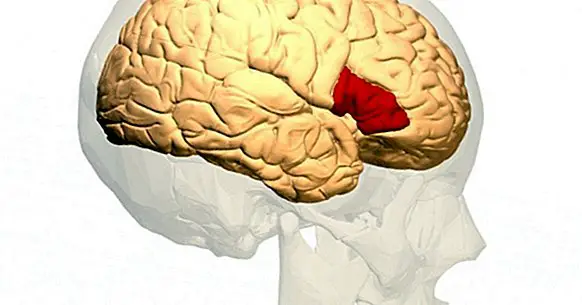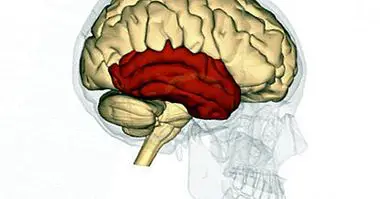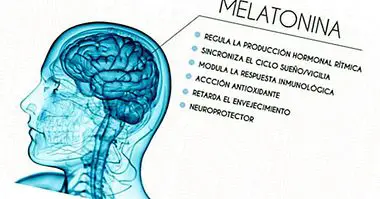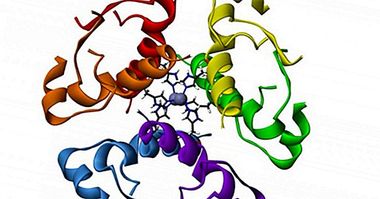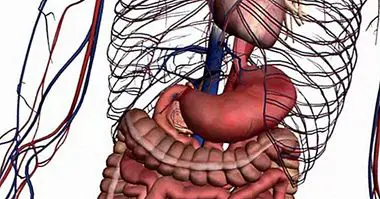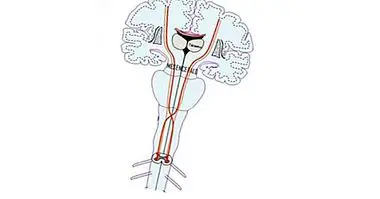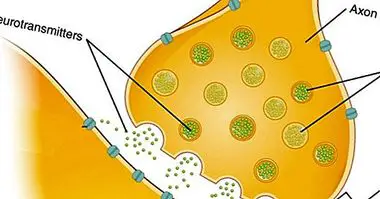Broca's area (part of the brain): functions and their relation to language
Broca's area is one of the parts of the brain what more attention have they received in the investigation of the neurobiological mechanisms that explain our use of language, whether spoken or written. The reason for this is that clinical studies related to this area of the cerebral cortex show that there are different specialized parts in different aspects of language.
In this article we will see what Broca's area is and how it relates to the use of language.
- Related article: "Parts of the human brain (and functions)"
Broca's area: a definition
Throughout history, attempts to understand the functioning of the brain have led to try to study the mental processes that carry out parts of it, as if they were relatively isolated from the rest. The Broca area was one of the first regions of the central nervous system to be associated with a concrete mental process and differentiated from the rest .
The concrete, Broca's area is the part of the brain that is responsible for the articulation of language in any of its forms . Thus, both in writing and speech, this portion of the central nervous system specializes in the production of a message with internal coherence and articulated by the corresponding fractions of language, whether letters or phonemes.
Location
The area of Broca located in the third frontal convolution (in the frontal lobe) of the left cerebral hemisphere, although in some exceptional cases it is found in the right hemisphere. Specifically, according to the Brodmann map, it occupies the areas 44 and 45 of Brodmann , near the eye and attached to the front of the temporal lobe.
Broca's aphasia
The discovery of Broca's area came hand in hand with clinical cases in which patients with this damaged area were unable to write and pronounce well even though they could understand what they were being told. This led to the establishment of the existence of a syndrome known as Broca's aphasia , characterized by all the typical symptoms that appear when there is an injury in Broca's area and other parts of the brain have been relatively preserved.
In particular, the main symptoms are the following:
- Problems at the time of repeat words .
- Lack of fluency when trying to speak or write .
- The ability to understand texts and spoken language is preserved.
This syndrome is distinguished especially from another type of aphasia related to a part of the brain called Wernicke's area. This is Wernicke's aphasia, in which, in comparison to Broca's aphasia, the language and writing are much more fluid, but the ability to give meaning to what is said or what is read or lost is lost. listen, for which you do not understand what others say .
On the other hand, it must be borne in mind that when a part of the brain is damaged, whether Broca's or Wernicke's area, other parts of the brain are indirectly affected, so the symptoms that appear are not an exact reflection of the tasks performed by these parties.
- Related article: "Broca's aphasia: symptoms and causes of this disorder"
Functions of this brain region
Currently, the area of Broca is associated with these functions and main mental processes:
- Language production
- Contributes to create spoken or written language, establishing chains of words and letters or phonemes.
- Regulation of gestures linked to speech .
- When we speak, we usually move other parts of our body so that that information complements what we are saying out loud. All this, moreover, occurs spontaneously, and it is thanks to the work of the Broca area.
- Recognition of grammatical structures.
- Broca's area reacts in a specific way c When you read or hear a grammatically constructed sentence
- Regulation of the pronunciation of phonemes.
- This part of the left frontal lobe is also responsible for monitor the pronounced phonemes , so that it recognizes when a stretch of the word does not sound like it should.
- Regulation of the rhythm of speech.
In addition, the area of Broca is also responsible for working with another important element of the production of spoken language: the times. In this way it allows us to give our speech the proper rhythm. On the other hand, in the phase immediately prior to pronunciation, it inhibits the appearance of phonemes other than the corresponding one in each part of the word.
Keep in mind that neurosciences are constantly advancing, and that is why what is known today about what tasks Broca's area performs is, possibly, just the tip of the iceberg.
Your relationship with the Wernicke area
As we have seen, Broca's area is a proof that not all parts of the brain are responsible for doing the same . Even language, which is apparently a single skill, is composed of many others that can be separated.
Wernicke's area is the other great area of language that intervenes in the use of this mental faculty. That is why it communicates with the area of Broca through a set of neuronal axons directed towards the front. Lesions in one or another area, or in the set of axons that communicate to both, produce different types of aphasias.
Bibliographic references:
- Ardila, A .; Bernal, B .; Rosselli, M. (2016). «How Localized are Language Brain Areas? A Review of Brodmann Areas Involvement in Oral Language ». Archives of Clinical Neuropsychology 31 (1): pp. 112 - 122.
- Binkofski, F., Amunts, K., Stephan, K.M., Posse, S., Schormann, T., Freund, H.J., Zilles, K., Seitz, R.J. (2000). "Broca's region subserves imagery of motion: a combined cytoarchitectonic and fMRI study". Human Brain Mapping. 11 (4): 273-285.
- Caplan, D. (2006). "Why is Broca's area involved in syntax?" Cortex; A Journal Devoted to the Study of the Nervous System and Behavior. 42 (4): 469-71.
- Fadiga, L., Craighero, L. (2006). "Hand actions and speech representation in Broca's area". Cortex; A Journal Devoted to the Study of the Nervous System and Behavior. 42 (4): 486-90.

